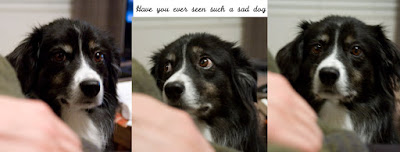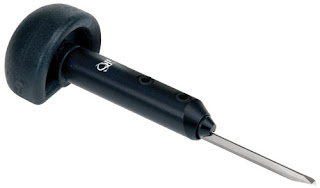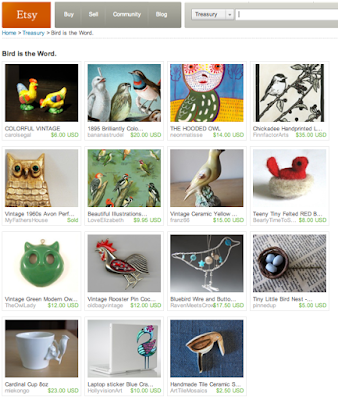The whole thing started out, when I printed a larger reduction cut and needed good registration for the two colors. I glued and taped the above cardboard registration together after looking at some different ways of registering on proofing and iron hand presses. I realized about 2/3 way through printing the first color that every time when I bumped my paper against the registration strip it moved a little. So all the prints until that point had a slightly different registration. Getting the second color printed on the same spot on those prints was pretty much impossible, hence a large amount of messed up prints. Note to self, let glue dry completely before using things for registration.
 So- I needed something more permanent, than cardboard, glue and masking tape. Carving unmounted linoleum is also more comfortable (and cheaper) for me, so I wanted the registration to work for unmounted linoluem blocks. I started off with a piece of 3/4" thick plywood for the base for the registration jig. On top of it, I mounted a piece of mylar with 3M spray adhesive (great stuff). You can see the edges of the shiny mylar in the pictures since it was not as big as the piece of wood. I wanted the mylar on the wood to make it easier to keep clean and to be able to reuse the jig for a long time for different blocks. You can see on the press, I still had to shimmy the plywood higher with some cardboard (I used the backer boards from pads of newsprint).
So- I needed something more permanent, than cardboard, glue and masking tape. Carving unmounted linoleum is also more comfortable (and cheaper) for me, so I wanted the registration to work for unmounted linoluem blocks. I started off with a piece of 3/4" thick plywood for the base for the registration jig. On top of it, I mounted a piece of mylar with 3M spray adhesive (great stuff). You can see the edges of the shiny mylar in the pictures since it was not as big as the piece of wood. I wanted the mylar on the wood to make it easier to keep clean and to be able to reuse the jig for a long time for different blocks. You can see on the press, I still had to shimmy the plywood higher with some cardboard (I used the backer boards from pads of newsprint). After that I cut a piece of 1/8" plexi to cover the plywood. I made the plexi larger to accommodate larger sheets of paper and to make it easier to grab the top and flip it up when printing. The plexi also has a window cut into it so that it will drop down around the linoblocks nicely. The opening size depends on how large blocks you want to be printing and how much extra paper you want around your prints. I normally print about 2" borders on my prints, so the plexi frame is about 1 1/2"-3" thick all around.
After that I cut a piece of 1/8" plexi to cover the plywood. I made the plexi larger to accommodate larger sheets of paper and to make it easier to grab the top and flip it up when printing. The plexi also has a window cut into it so that it will drop down around the linoblocks nicely. The opening size depends on how large blocks you want to be printing and how much extra paper you want around your prints. I normally print about 2" borders on my prints, so the plexi frame is about 1 1/2"-3" thick all around. Next thing was to get a piano hinge and cut it to the right length. I shaved a hair off the end of the plywood so that the plexi would lie flat after the hinge was attached. I used some epoxy glue and screws to attach the hinge to the plexi. The screws were longer and I cut the tips off with a dremel, after it was all put together. The whole thing looks a little ugly on the top, but it works, and so far has not broken down on me, 7 editions later.
Next thing was to get a piano hinge and cut it to the right length. I shaved a hair off the end of the plywood so that the plexi would lie flat after the hinge was attached. I used some epoxy glue and screws to attach the hinge to the plexi. The screws were longer and I cut the tips off with a dremel, after it was all put together. The whole thing looks a little ugly on the top, but it works, and so far has not broken down on me, 7 editions later. Here are just a couple of closeup shots of the end. Sometimes it's helpful to have pictures from a couple of different angles...


Here is the jig being used. When printing multiple blocks, I would adhere them to the jig with a quick spritz of spray adhesive to the back of my linoblock, just enough to keep it in place but easily removable when I was done printing. For multiple colors, I drew around the block on the mylar with a sharpie so it could be placed in the exact same spot when I was done carving the second color. The plexi had a strip of cardboard taped to it. Both the cardboard and paper had center marks, so that paper could be aligned the same every time.

When rolling up with ink I flip the plexi up and rest it over the press roller. For printing, I flip it down to use the registration on it. Instead of wool felts to print, I use a rubber "felt" thats a free recycle from a local offset printing place. To help visualize, I have posted a video about printing reduction cuts. (See very bottom of blog post.)
Hope you have enjoyed this post, if you have other ideas for registration or questions, please write to me. I would love to hear from ya! Coming next is an interview with some one I met at the MAPC conference, I was very excited about her technique for polymerplates, and she agreed to share her work with us.




















